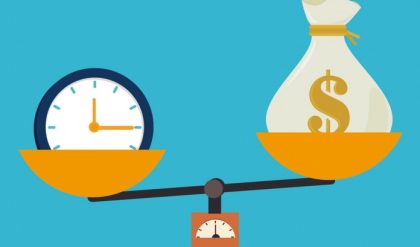Breakeven analysis is useful for the following reasons:
· It helps to determine remaining/unused capacity of the concern once the breakeven is reached. This will help to show the maximum profit on a particular product/service that can be generated.
· It helps to determine the impact on profit on changing to automation from manual (a fixed cost replaces a variable cost).
· It helps to determine the change in profits if the price of a product is altered.
· It helps to determine the amount of losses that could be sustained if there is a sales downturn.
Additionally, break-even analysis is very useful for knowing the overall ability of a business to generate a profit. In the case of a company whose breakeven point is near to the maximum sales level, this signifies that it is nearly impractical for the business to earn a profit even under the best of circumstances.
Therefore, it’s the management responsibility to monitor the breakeven point constantly. This monitoring certainly reduces the breakeven point whenever possible.
Ways to monitor Break even point
Pricing analysis: Minimize or eliminate the use of coupons or other price reductions offers, since such promotional strategies increase the breakeven point.
Technology analysis: Implementing any technology that can enhance the business efficiency, thus increasing capacity with no extra cost.
Cost analysis: Reviewing all fixed costs constantly to verify if any can be eliminated can surely help. Also, review the total variable costs to see if they can be eliminated. This analysis will increase the margin and reduce the breakeven point.
Margin analysis: Push sales of the highest-margin (high contribution earning) items and pay close attention to product margins, thus reducing the breakeven point.
Outsourcing: If an activity consists of a fixed cost, try to outsource such activity (whenever possible), which reduces the breakeven point.
Benefits of Break-even analysis
Ø Catch missing expenses: When you’re thinking about a new business, it’s very much possible that you may forget about few expenses. Therefore, if you do a break-even analysis you have to review all your financial commitments to figure out your break-even point. This analysis certainly restricts the number of surprises down the road.
Ø Set revenue targets: Once the break-even analysis is complete, you will get to know how much you need to sell to be profitable. This will help you and your sales team to set more concrete sales goals.
Ø Make smarter decisions: Entrepreneurs often take decisions in relation to their business based on emotion. Emotion is important i.e. how you feel, though it’s not enough. In order to be a successful entrepreneur, your decisions should be based on facts.
Ø Fund your business: This analysis is a key component in any business plan. It’s generally a requirement if you want outsiders to fund your business. In order to fund your business, you have to prove that your plan is viable. Furthermore, if the analysis looks good, you will be comfortable enough to take the burden of various ways of financing.
Ø Better Pricing: Finding the break-even point will help in pricing the products better. This tool is highly used for providing the best price of a product that can fetch maximum profit without increasing the existing price.






Comments are closed.